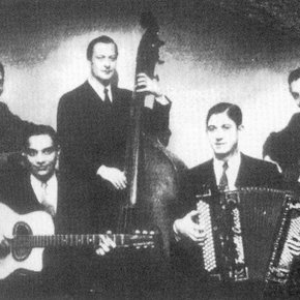
| Trackimage | Playbut | Trackname | Playbut | Trackname |
|---|---|---|---|---|
| 83302886 | Play | Flambee Montalbanaise | 00:00 Tools | |
| 83302887 | Play | Swing Valse | 00:00 Tools | |
| 83302888 | Play | Matelotte | 00:00 Tools | |
| 83302889 | Play | Rosetta | 00:00 Tools | |
| 83302890 | Play | Swing 39 | 00:00 Tools | |
| 83302891 | Play | Jeannette | 00:00 Tools | |
| 83302892 | Play | Swing | 00:00 Tools | |
| 83302893 | Play | Soir De Dispute | 00:00 Tools | |
| 83302894 | Play | Undecided | 00:00 Tools | |
| 83302895 | Play | Nuages | 00:00 Tools | |
| 83302896 | Play | Swing '42 | 00:00 Tools | |
| 83302899 | Play | Swing 42 | 00:00 Tools | |
| 83302897 | Play | I've Got Rhythm | 00:00 Tools | |
| 83302898 | Play | Porter 39 | 00:00 Tools | |
| 83302901 | Play | Flambée Montalbanaise | 00:00 Tools | |
| 83302900 | Play | Flambee Montabanaise | 00:00 Tools | |
| 83302902 | Play | Swing 42 - Eng 20 Mai 1942 Paris | 00:00 Tools | |
| 83302903 | Play | Mado | 00:00 Tools | |
| 83302904 | Play | Undecided [1940] | 00:00 Tools | |
| 83302905 | Play | Rosetta [1940] | 00:00 Tools | |
| 83302906 | Play | Anomalie | 00:00 Tools | |
| 83302907 | Play | Douce Joie | 00:00 Tools | |
| 83302908 | Play | Tiger Rag | 00:00 Tools | |
| 83302909 | Play | Swing '42 [1942] | 00:00 Tools | |
| 83302910 | Play | Flambee montalbanaise [1940] | 00:00 Tools | |
| 83302911 | Play | Porter | 00:00 Tools | |
| 83302912 | Play | Partie De Plaisir | 00:00 Tools | |
| 83302913 | Play | Swing valse [1940] | 00:00 Tools | |
| 83302914 | Play | Josette | 00:00 Tools | |
| 83302915 | Play | Souvenir de Bruxelles | 00:00 Tools | |
| 83302916 | Play | Gracieusette | 00:00 Tools | |
| 83302917 | Play | L'incomprise | 00:00 Tools | |
| 83302918 | Play | swing valse (1940) | 00:00 Tools | |
| 90259344 | Play | When You're Smiling | 00:00 Tools | |
| 83302919 | Play | Lorsque Django jouait | 00:00 Tools | |
| 83302920 | Play | Nuages [1942] | 00:00 Tools | |
| 90259345 | Play | Mazalda | 00:00 Tools |

-
- 14,111
- plays
-
- 2,161
- listners
-
- 14111
- top track count
Gus Viseur (Gustave-Joseph Viseur, Lessines, Belgium, May 15, 1915 – August 25, 1974, Paris, France) was a Belgian/French button accordionist. Gus Viseur was a virtuoso in the musette genre, during the swing era in the 1930s. He is the only jazz accordionist who is a member of the famous Hot Club de France, conducted by Charles Delaunay. Gus Viseur began his career playing in the streets of Paris. He managed to get a great sound from a chromatic button accordion. It was clear that he was doing something innovative: He helped create the accordion-jazz style known as manouche. Meeting Django Reinhardt and performing with the legendary Quintet of the Hot Club of France was an important new chapter in his life. Later he even played bebop in the fifties. He was the first to draw a link between Musette and Jazz, but he never forgot Musette. That was his main voice. There is an unbelievable strength in his playing, that gives him the ability to improvise in all those different music genres. In addition to his numerous recordings he also performed in cabarets and nightclubs with musicians including Didi Duprat. He recorded his first record in 1937 and accompanied Édith Piaf in 1940. He recorded all the genres of the musette repertoire: valse, tango, paso doble,... Read more on Last.fm. User-contributed text is available under the Creative Commons By-SA License; additional terms may apply.